Intellectual property protection is fundamental to having the legal rights to your IP, so you can decide best how to use it and control it.
Here is our ultimate business guide on IP protection in Australia to understand your rights and the steps you can take to protect your brand.
What is intellectual property (IP)?
Intellectual property (IP) encompasses creations of the mind or exclusive knowledge, such as products, ideas, technology, literary works, designs, and branding elements like names, logos, words and taglines. These include IP rights such as trademarks and patents.
When registered, IP is protected by law, giving the owner exclusive legal rights to use, commercialise and protect their IP.
Who owns intellectual property?
Ownership of IP generally belongs to the creator, and it can be transferred, assigned, or shared between individuals or businesses.
You own the IP if:
- you created it independently; or
- you purchased the IP rights from someone else.
However, if an employee or contractor created the IP, ownership often depends on what’s stated in the employment or service contract.
Other facts to keep in mind:
- IP can be co-owned by more than one party;
- you can license your IP or sell it to another party; and
- a formal agreement should always define who owns what and under what terms.
Types of intellectual property
Each type of IP serves a specific purpose and is governed by its own legislation in Australia. Below is a breakdown of the main types of IP, how they work, and what they protect.
Trademarks
A trade mark protects your brand identity and its distinctive elements, ideas, products or services and differentiates your brand from competitors, providing legal protection against unauthorised use.
Examples:
- business names;
- product logos;
- taglines or catchphrases;
- jingles, brand colour; and even brand smells and sounds.
Duration: 10 years (renewable indefinitely).
Read about “What do ™ , ® , and © mean? trademark symbols explained”
Patents
Patents protect new inventions, processes, devices, or methods, giving the owner exclusive commercial rights to use or license the invention.
To apply for a patent, the idea, product, or service must be new, useful, and inventive, and it must not have been publicly disclosed before the application.
Examples:
- a pharmaceutical drug;
- a new type of machine or technology; and/or
- a new product;
- an innovative chemical compound.
Duration: Up to 20 years (25 for pharmaceuticals).
Copyright
Copyright gives the original creator the legal right to control their work, including how it is used and distributed. There’s no need for registration in Australia, as it applies automatically upon creation.
Examples:
- novels, poems, and blogs;
- music, lyrics, and recordings;
- artwork, photos, and videos;
- architectural and engineering designs; and
- software source code.
Duration: Life of the creator + 70 years.
*Note: You are entitled to display the copyright symbol (©) if you are the original creator of the works.
Designs rights
Registered designs protect the visual appearance of a product, including its shape, configuration and pattern.
Examples:
- designer furniture;
- fashion items; and
- unique packaging;
- industrial products.
Duration: Up to 10 years (must be registered and certified).
Trade secrets
Trade secrets are commercially valuable, confidential information that is protected through confidentiality rather than registration.
Examples:
- secret recipes (e.g., Coca-Cola formula);
- manufacturing techniques; and
- software algorithm.
Duration: Indefinite (as long as it remains secret)
Plant breeder’s right (PBR)
Get exclusive commercial rights over new varieties of plants developed, including production, sale, distribution, importing and stocking of the protected plant variety for a specified period.
Examples:
- a disease-resistant wheat variety;
- a new species of rose; or
- a grapevine for wine production.
Duration: 20 years (25 for trees and vines)
Circuit Layout Rights
These rights protect original layout designs for integrated circuits used in computer chips and electronic devices. Like copyright, protection is automatic.
Examples:
- microchips;
- semiconductors; and/or
- circuit board layout.
Duration: 10 years from the first commercial use.
Why is intellectual property important?
IP is crucial for strategic safeguarding; it legally protects your brand, allowing you to earn from your IP and keep control over how it’s used.
Key benefits include:
- protect your brand and reputation
- gain exclusivity in the market to sell, promote or develop a product/idea.
- enhance investor and business value
- commercialise and license for profit
IP protection also encourages innovation and creativity by motivating people and companies to put time, effort and resources into developing new ideas, technologies and artistic projects.
How to protect your intellectual property in Australia
If you are considering registering any intellectual property, here are some guidelines we recommend:
- Identify your IP → Review and determine your assets such as logos, product names, inventions, designs, content or trade secrets.
- Search the IP registers → Use IP Australia’s search tools to check if something similar already exists.
- Check ownership → Ensure employees and contractors have signed agreements that assign IP ownership to your business.
- Apply for registration → File your application with IP Australia for trade marks, patents, designs or PBRs.
- Use NDAs and contracts → To protect trade secrets, use confidentiality agreements when sharing sensitive information.
- Secure your digital assets → Use secure storage, encryption, password protection and IT policies.
- Implement internal IP policies → Educate your team on how to handle IP and what not to disclose.
Lastly, get advice and guidance from professional IP lawyers to avoid mistakes and ensure your rights are enforceable.
What to do if your IP is infringed
Infringement is when someone uses your IP without permission, trespassing on your legal rights. Therefore, it’s key to take early legal action to prevent further loss or damage.
What counts as infringement?
- copying your logo or slogan;
- using your invention without a license; and/or
- replicating your creative work without credit.
What to do?
- document and gather all evidence (screenshots, files, dates);
- contact an IP lawyer immediately;
- send a cease and desist letter to stop the misuse before litigation; and
- if necessary, there may be legal action involved. Here, your lawyer can assist with claims, damages or court action.
Common IP mistakes to avoid
“No IP clauses in agreements”
Not defining clear IP ownership in contracts can lead to disputes over who owns the creation.
“No NDAs with suppliers or partners”
Sharing sensitive info without an NDA can result in stolen ideas or the leaking of trade secrets.
“No clear IP strategy”
Without a defined plan, you risk missing registration deadlines or losing commercial opportunities. Many businesses also don’t know what they own, so regular audits can help identify what’s valuable and what needs protection.
“Not educating employees”
If employees don’t understand IP risks, they may unintentionally disclose confidential info, costing you legal protection.
Secure your intellectual assets with H+A Legal
Intellectual property is not just a legal right; it’s also your competitive advantage. With H+A Legal’s expertise in IP protection in Australia, you can see a significant difference in protecting your brand. We’re ready to assist with:
- Search and registrability
- Registration
- Infringements
- Oppositions
- Claims
- Draft or review contracts with IP clauses
- Contract breaches
- Commercial disputes
- Advice and compliance
H+A Legal helps you set a strong legal foundation for growth – contact us today to get started!



